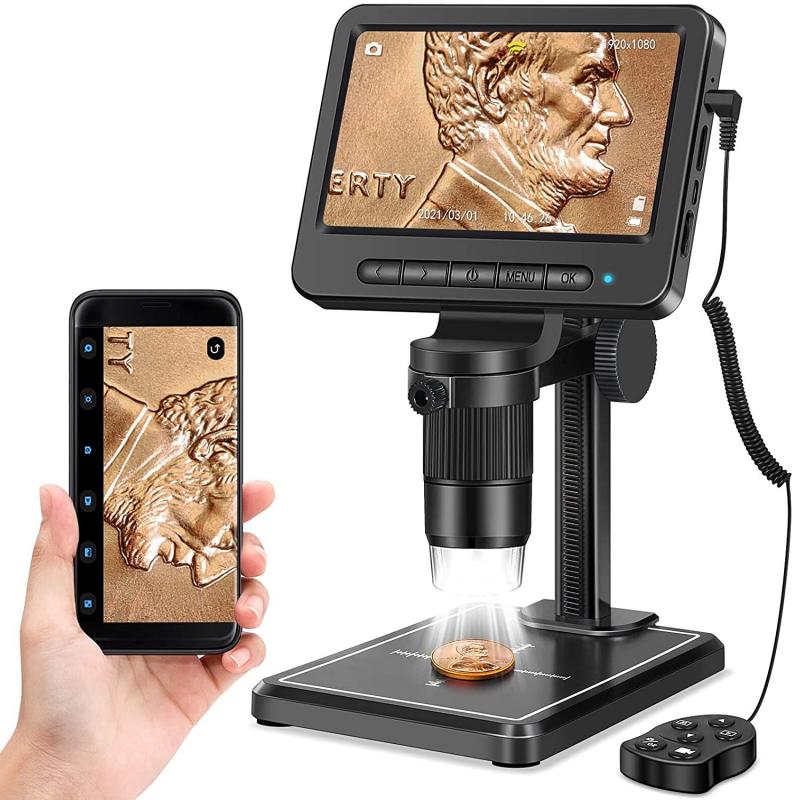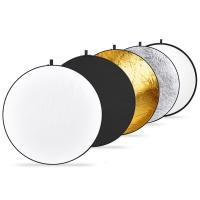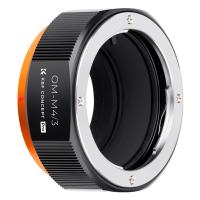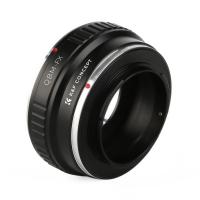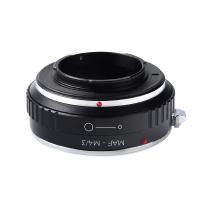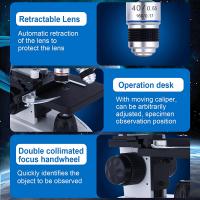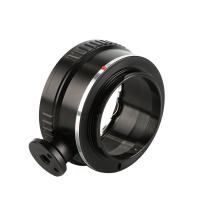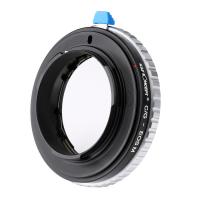When Was The Microscope Invented ?
The microscope was invented in the late 16th century.
1、 Early Microscopic Observations (Antiquity to 17th Century)
The invention of the microscope is a significant milestone in the history of science and has revolutionized our understanding of the microscopic world. Early microscopic observations can be traced back to antiquity, with the use of simple magnifying lenses by the ancient Egyptians and Romans. However, it was not until the 17th century that the microscope as we know it today was invented.
The credit for the invention of the compound microscope, which uses multiple lenses to magnify objects, is often given to the Dutch scientist Antonie van Leeuwenhoek. In the late 17th century, Leeuwenhoek developed a powerful microscope with a single lens, which he used to make groundbreaking observations of microorganisms and other microscopic structures. His discoveries laid the foundation for the field of microbiology.
However, recent research suggests that the invention of the microscope was not solely attributed to Leeuwenhoek. It is now believed that other scientists, such as Robert Hooke in England, also made significant contributions to the development of the microscope during the same period. Hooke's book "Micrographia" published in 1665, contained detailed illustrations of microscopic observations using a compound microscope.
The exact date of the invention of the microscope is difficult to determine, as it was a gradual process with multiple scientists making incremental improvements. Nevertheless, the 17th century marks a turning point in the history of microscopy, with the invention of more sophisticated microscopes and the discovery of previously unknown microscopic structures.
In conclusion, while early microscopic observations can be traced back to antiquity, the invention of the compound microscope, as we know it today, is generally attributed to scientists like Antonie van Leeuwenhoek and Robert Hooke in the 17th century. Their contributions paved the way for the field of microscopy and opened up a whole new world of scientific exploration.

2、 Invention of the Compound Microscope (Late 16th Century)
The microscope, a revolutionary scientific instrument that has allowed us to explore the microscopic world, was invented in the late 16th century. The credit for the invention of the compound microscope is often given to two Dutch spectacle makers, Zacharias Janssen and his father Hans Janssen, around the year 1590. However, the exact details of its invention are still a subject of debate among historians.
The compound microscope consists of two or more lenses that magnify the image of an object. It was a significant advancement over the simple microscope, which had only one lens and limited magnification capabilities. The compound microscope allowed scientists to observe tiny organisms, cells, and other microscopic structures with much greater clarity and detail.
While the Janssen's contribution to the development of the microscope is widely acknowledged, some historians argue that others, such as Hans Lippershey or Hans and Zacharias's rival, Cornelis Drebbel, may have also played a role. The lack of detailed records from that time makes it difficult to determine the exact sequence of events.
Regardless of the specific inventor, the compound microscope quickly gained popularity among scientists and researchers. In the following centuries, many improvements were made to the design and functionality of the microscope. Notable figures like Robert Hooke and Antonie van Leeuwenhoek made significant contributions to the field of microscopy, further advancing our understanding of the microscopic world.
Today, microscopes have become an indispensable tool in various scientific disciplines, including biology, medicine, and materials science. Technological advancements have led to the development of powerful microscopes, such as electron microscopes, which can provide even higher magnification and resolution. These modern microscopes continue to push the boundaries of scientific exploration and contribute to numerous discoveries and advancements in various fields.

3、 Advancements in Microscope Design and Optics (17th-19th Century)
The microscope, a revolutionary instrument that has allowed us to explore the microscopic world, was invented during the 17th century. The exact date of its invention is a matter of debate, as there were several individuals who made significant contributions to the development of the microscope during this time.
One of the earliest pioneers in microscope design was the Dutch scientist Antonie van Leeuwenhoek. In the late 17th century, he crafted simple microscopes with a single lens, which he used to observe a wide range of specimens, including bacteria and blood cells. Although Leeuwenhoek's microscopes were relatively basic, they laid the foundation for future advancements in microscope design.
Another key figure in the history of the microscope is Robert Hooke, an English scientist who published the influential book "Micrographia" in 1665. In this book, Hooke described his observations using a compound microscope, which featured multiple lenses and provided higher magnification than Leeuwenhoek's single-lens microscopes. Hooke's work helped popularize the use of microscopes and inspired further developments in microscope design.
Throughout the 18th and 19th centuries, scientists and inventors continued to refine microscope design and improve the quality of optics. Notable advancements during this period included the development of achromatic lenses, which reduced chromatic aberration and improved image clarity. Additionally, improvements in illumination techniques, such as the introduction of artificial light sources, allowed for better visualization of specimens.
In recent years, there have been significant advancements in microscope technology. For example, the invention of electron microscopes in the 20th century revolutionized our ability to observe structures at the atomic level. Furthermore, the development of confocal microscopy and super-resolution microscopy techniques has allowed for even higher resolution imaging.
In conclusion, the microscope was invented during the 17th century, with contributions from scientists like Antonie van Leeuwenhoek and Robert Hooke. Advancements in microscope design and optics continued throughout the 18th and 19th centuries, leading to improved image quality and magnification. In recent years, further advancements in microscope technology have allowed for even more detailed observations at the microscopic level.

4、 Development of Electron Microscopes (20th Century)
The microscope, as we know it today, has a long and fascinating history that dates back to the 17th century. However, the development of electron microscopes, which revolutionized our understanding of the microscopic world, took place in the 20th century.
The first electron microscope was invented in 1931 by German physicist Ernst Ruska and his colleague Max Knoll. This groundbreaking invention utilized a beam of electrons instead of light to magnify objects, allowing for much higher resolution and greater detail. The electron microscope quickly became an essential tool in various scientific fields, including biology, materials science, and nanotechnology.
Over the years, electron microscopes have undergone significant advancements. In the 1940s, the transmission electron microscope (TEM) was developed, which allowed scientists to study the internal structure of specimens in even greater detail. In the 1950s, the scanning electron microscope (SEM) was introduced, enabling researchers to obtain three-dimensional images of the surface of objects.
In recent years, there have been further advancements in electron microscopy. For example, the development of aberration-corrected electron microscopes has significantly improved the resolution and clarity of images. Additionally, the introduction of environmental electron microscopes has allowed scientists to study specimens under more realistic conditions, such as in a controlled atmosphere or even in liquid.
Furthermore, electron microscopy techniques have been combined with other imaging techniques, such as X-ray spectroscopy and electron energy loss spectroscopy, to provide a more comprehensive understanding of the chemical composition and properties of materials.
In conclusion, the invention and development of electron microscopes in the 20th century have revolutionized our ability to observe and understand the microscopic world. These powerful tools continue to evolve, providing scientists with increasingly detailed and accurate information about the structure and behavior of various materials and biological specimens.
